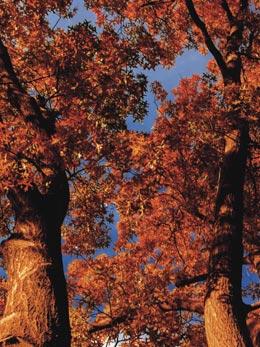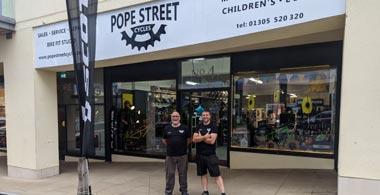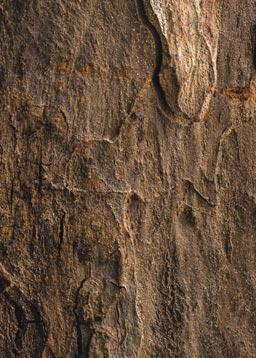
17 minute read
Down to earth
The West Dorset Magazine, July 29, 2022 37 Down to earth Saturn leading return of planets suite
Kevin Quinn is a Dark Sky Custodian for the Cranborne Chase Dark Sky Reserve who lives in Piddletrenthide. Read his blog at theastroguy.wordpress.com
Advertisement

August is a special time of the year with regard to all things ‘night sky’. The weather’s still warm, the nights are getting a little longer, and there’s what is probably the best meteor shower of the year (the Perseids, although this year the peak coincides with the full moon). However, what I’m most excited about is the return of the planets to the evening sky (at a reasonable hour, that is). Saturn will lead the way, appearing (low in the south east) just after sunset at the beginning of the month, but higher in the sky as the days go by, and will be followed by Neptune and then Jupiter. Saturn and Jupiter will be easy naked-eye objects, whilst Neptune, which lies to the right of Jupiter (about a quarter of the distance between the two gas giants), will require at least a pair of binoculars to TREE SURGERY & see. By midnight Uranus and GARDEN MAINTENANCEMars will join the show. During the recent 07826 030706 heatwave, I struggled to sleep, as I’m sure did many others. stevettg@hotmail.comI got up and went out at around 3.30am, walked up out of the Piddle valley, and had a look at the solar system. The view was astounding: the Milky Way was bright, if a little hazy, but Saturn, Jupiter, Mars and Venus were blazing away brightly, especially the latter. Close inspection of one of the photos I took with my phone revealed a dim Neptune. The power of the technology we carry around with us is truly mind boggling. Anyway, while it’s nice to be able to spot one planet in the sky, seeing several at the same time, contemplating their positions in their orbits relative to the Sun, visualising the tilt of the ecliptic (the flat plane upon which the planets lie), and then comparing that with the galactic plane of the Milky Way, all combine to instil a mind-boggling sense of scale and belonging to a greater whole. That’s true of the night sky generally, but really comes across when one sees the clockworklike solar system in action. Something else to look out for is the return of the Andromeda galaxy (Messier 31) to the evening sky, currently rising in the north-east around 10pm. At 'only' 2.5 million light years away, and with a diameter around six times that of the full moon, it's an easy spot from a reasonably dark site, but is actually best viewed with a pair of binoculars, such as 10x50s. Look for it between the large ‘W’ of Cassiopeia
W MARKS THE SPOT: Look between the large 'W' of Cassiopeia and the Great Square of Pegasus to find the Andromeda galaxy (Messier 31)0 and the Great square of Pegasus – use the accompanying photo, or a star map app on your phone to help find it. To the naked eye it appears as a small fuzzy patch, but with binoculars the inclined galactic disc, complete with dark dust lanes, becomes apparent. See if you can see Andromeda’s satellite galaxies, M32 and M110, as well … three galaxies for the price of one!


BEACHCOMBING with JO BELASCO BA Hons History of Architecture and Design
Not having an ‘outdoorsy’ childhood and growing up in the suburbs of London, the moon did not feature much in my life. The moon to me was a romantic accoutrement in songs and stories. A full moon was a symbol of magic with its connections to werewolves and (luna)tics and that was about the limit to which the moon touched my life. The first shift in this thinking was learning to sail. My day skipper theory course was the first time I thought of the moon in a practical rather than literary sense. The moon affects tidal pull and therefore is a vital factor in passage planning. But still I never really took to sailing (unlike my husband) but prefer to beachcomb. Getting a growing awareness of the tides and the moon phases enhances beachcombing but is not essential like it is in sailing. Knowing that the full moon and the new moon bring spring tides where the tide, springs fast from very low to very high helps you plan when you want to visit an area which is usually out of reach. I love the area of the Fleet Lagoon near the old Moonfleet church. Where there are signs warning you to be careful of patches of deep soft sand do take heed. I did not – believing the signs to be just a Scooby Dooby Doo device to frighten off those ‘pesky kids’. I sunk to my waist and my mobile phone never recovered. A project to make a picture showing the moon phases suggested itself to me. Over the years I have found a lot of bottle bases for full moons. Finding crescent moons which are the same size and right shape is harder. Around Moonfleet there are a lot of oyster shells and the occasional bone which I have combined to make the Moon-phase picture shown. In researching moon phases I got side tracked by an image of the Egyptian Goddess Isis (as you do...) Moonfleet also has quite a lot of mussel shells discarded after being the crows’ lunch. One time I came across the remains of a barbecue feast of party proportions and managed to collect a lot. This booty once scrubbed clean became the feathers of the Goddesses wings. I am not sure the picture is finished yet – I will wait to see what the beach offers next.

SEA MOON: A full moon and sea pictured by Steve Belasco
SHE’S GOT MUSSELS: Isis Goddess picture with mussel shell wings and, right, moon phases with bone, seaglass and oyster shell

THIS IS THE WAY: The old church signpost near Moonfleet
Keeping track of the moon and tides to improve hunts
By Miranda Robertson
miranda@westdorsetmag.co.uk
The newest bike shop on the block has opened in Dorchester’s Brewery Square – and it’s an Aladdin’s cave for the pedalling fraternity. Pope St Cycles is not a completely new venture for its owner Martin Cracknell, 38. Martin and wife Chauntelle ran a coffee and bike shop in Wool for some time before making the move to the county town. A keen road and mountain biker himself, Martin and his hand-picked staff offer a wealth of knowledge alongside the sales and servicing. The move to the new premises means no coffee shop (though there is a coffee machine), but more space to offer the types of services demanded by toplevel cyclists alongside bikes and accessories for beginners and children and anyone in between. A large range of the increasingly popular electric bikes are here too. And a new ‘bike fit studio’ offers people buying the top-end bikes the chance to calibrate them minutely. Martin, who is an Army reservist at Bovington and rides for their enduro team, said: “I always said I never wanted to own a bike shop! I don’t know what happened there… “Incredibly, the idea has worked straight away –we are booked up for the next two weeks.” Bookings being brisk for their servicing and repairs is no surprise when you consider the shop has well over 2,000 followers on Facebook and boasts 58 five-star reviews. Martin is also planning to organise ‘ride-outs’, offering people the chance to cycle Dorset’s many biking trails alongside people who know the terrain well. n Find Pope Street Cycles on Facebook or go to popestreetcycles.co.uk, email martin@ dreamadventures.co.uk or call 01305 520 320.

ON YOUR BIKES: John Burrow and Martin Cracknell at Pope Street Cycles
ALL THE RIGHT GEAR: Some of the calibration equipment in the workshop
It’s a chain reaction as new bike shop opens in Square
Beryl’s big bikeshare boost for jobs and tourism
A new bikeshare scheme by Beryl in partnership with Dorset Council and South Western Railway, is set to boost access to employment and visitor attractions while further encouraging sustainable commuting. The UK’s leading micromobility provider has launched ten bikes and six parking bays at the Dorset Innovation Park and Wool station with further bays available nearby in Wool and Bovington. Funded by £57,500 from the South Western Railway’s Customer and Communities Fund (CCIF) and £15,000 from Dorset & Wool Parish Council, the scheme aims to encourage more people to leave their car at home when commuting to and from the park. The bikes will give workers the option of a 10-minute cycle ride either to or from Wool railway station, normally a 40-minute walk. The park currently employs 804 people across 36 companies and is set for a £14.6m investment after Dorset Council approved funding last week. This could add a further 1,200 jobs in years to come. The scheme will also complement local bus services, boosting access to nearby visitor attractions.
A stepping stone to the inner circle
PAGAN VIEWS by JO BELASCO
Shortly after Zelda was old enough to go on a decent walk we set out for Kingston Russell stone circle. I was very excited to be able to walk from our home to a prehistoric site. She was full of puppyish energy, bounding everywhere. Suddenly, there was the sound of hooves (lots of hooves) and I called Zelda to me quickly. It seems my faithful hound was unwittingly flushing out pheasants which the hunt hoped to surprise. I explained we were on our way to Kingston Russell Stone circle. To my amazement they suggested we turn right and soon we would come across another stone circle. I was not going to antagonise the hunt and my interest was piqued about a second stone circle so I turned right and got out of their path. Yes, another stone circle only about half-a-mile from home. Up a steep hill so you get a sense of arrival with the view and the effort you have made. It’s only a small circle –it doesn’t have the theatricality which Kingston Russell possesses. But the more you visit the more you notice – the more you zone in. There is a plaque by the side of the overgrown site which gives a potted history but it’s mostly what you can see from the stones which excites me. Imagining our ancestors meeting there and lighting fires to communicate with others at different sites. Maybe, using certain materials to create purplish smoke to mean, “Urgent – Run for your lives!” or red smoke circles to indicate, “We have a feast ready for you!” You can see the Hardy Monument very clearly which of course would not have been there in stone age times but helps to give a lay of the land. By the side of the Hardy Monument is another stone circle but this one is not officially sanctioned. You can also see St Catherine’s Chapel, which again did not exist in the Stone Age, but you can be sure the hill was place of worship and lookout. To the east is Portland’s long, low wedge, which apparently once had an ancient stone circle at The Grove. And of course the Helstone is not far away as Peter Knight explains in his book Ancient Stones of Dorset. In other words Hampton stone circle is surrounded by a myriad Pagan sites.

COO-WEEE: Me at The Helstone at Portesham, pictured by Steve Belasco
Ancient elder tree by the side of Hampton stone circle framing The Hardy Monument in the distance and, right, the Hamptone Circle at Portesham. Below: The view from there

The West Dorset Magazine, July 29, 2022 41 Down to earth Sparrowhawks ensure survival of fittest
Sparrowhawk on the hunt! Sometimes all I glimpse is a dark shape swooping fast through the garden, at other times I’ve been lucky to see this splendid bird of prey resting on our garden fence. Once I even watched one as it ate its pigeon breakfast on our lawn! The sparrows in our garden have bred well this year, they have nests in holes and crevices in the bungalow’s wooden cladding as well as in their purpose-built nestbox ‘terraces’. As the new fledglings join their parents in large flocks in the garden, it’s not surprising they’re attracting the attention of sparrowhawks. Sparrowhawks are quite small birds of prey, around the size of a collared dove, with the males having blue-grey wings and orange chest bars and the larger females looking similar but with brown markings. They can employ different hunting techniques, sometimes they will reach speeds of 50kph as they swoop on their prey, other times I have seen one wait in our hedge for an ambush. They don’t exclusively feed on sparrows, any small bird will do, with the female birds sometimes catching birds up to pigeon size. According to the RSPB, 120 different prey species have been recorded. They are not always successful, in fact research has found that only about one attack in ten results in a kill. They are quite easily seen and small birds give warning calls to each other. One evening recently it was the loud alarm calls that alerted me to the sight of a sparrowhawk swooping across the road to try and help itself to a swallow where several were feeding on insects quite low in the sky. Not only did it fail in its attempt, but it was also aggressively sent packing by the angry swallows who chased and mobbed it until they were all out of sight. I know some people find it distressing to see a young bird taken by a predator, but for a ‘top predator’ such as a sparrowhawk to thrive there must be a healthy sparrow population. I know many of the sparrows in my garden have three broods over the summer, if all the fledglings survived there wouldn’t be enough food or nest holes for them, the sparrowhawk picking off the weakest ensures ‘survival of the fittest’ for the sparrows!
Sally Cooke lives in Tolpuddle with her husband, two grown up sons and her spotty rescue dog. You can follow Sally on Instagram at Sparrows in a Puddle
Try some Carragheen for the perfect panna cotta
JOHN WRIGHT is a naturalist and forager who lives in rural West Dorset. He has written eight books, four of which were for River Cottage. He wrote the award-winning Forager’s Calendar and in 2021 his Spotter’s Guide to Countryside Mysteries was published.
I hope you have been enjoying the Dulse I recommended to you a few weeks ago – great stuff, I am sure you agree. Time, I think, to introduce my second favourite seaweed, one that can be used to make a splendid dessert. It is Carragheen. This is a small-fist-sized, wiry seaweed found attached to rocks and often inhabiting rock pools. False Carragheen is very similar, but no problem as both can be used for the same recipes and if you get it wrong, you will not find yourself in A&E, as no seaweed is poisonous. Both Carragheens contain organic chemicals (polysaccharides, should you be interested) called carrageenans. They are commonly used as food thickeners and can be seen on food labels as E407. Carrageenans can only form weak table jellies at concentrations dilute enough to be palatable, but strongly bind the proteins in milk at relatively low concentrations. Enter, then, the panna cotta and the salmon mousse. I always ignore detailed recipes and hate it when I have to write one, but the following (for a panna cotta) should work well enough, maybe with a bit of tweaking. Take a handful of thoroughly washed Carragheen and boil it in about 400mls of water for half an hour. Stir often, top up with water occasionally, and enjoy the heady aroma of Weymouth Bay. At more or less the same time, boil 400mls of milk, with sugar to taste, and a flavouring ingredient. The flavour can be almost anything you fancy: rose petals, Elderflowers, Lemon Verbena or Woodruff (all held in a muslin bag), chocolate or vanilla. However, it must not be acidic in the slightest as it will separate out and flatly refuse to set. Mix the contents of the two saucepans, then, using rubber gloves, squeeze through muslin or nylon straining bag into a bowl. Squeeze as much as you can and do not worry that it gets ‘snottier’ towards the end – that is the carrageenan at high concentration. Stir in as much cream as you fancy (‘lots’ being best) and pour into darioles or small cups. Don’t hang around as it sets extremely quickly and can form a ‘frozen waterfall’ as you pour if it gets too cold. Allow it to set at room temperature before putting it in a fridge. The set is always perfect and the mild evocation of Weymouth Bay a delight.
By Miranda Robertson
miranda@westdorsetmag.co.uk Think all palm oil is bad? It may be time to think again. A Dorchester company is urging businesses and individuals to seek out products that include sustainable palm oil, saying alternative oils can be even more detrimental to the earth. They are urging people to weigh up the facts and help Dorset become the world’s first ‘Sustainable Palm Oil County’. Efeca, a Dorset-based natural resources company working on resourcing commodities sustainably, is trying to help Dorset become the world’s first sustainable palm oil county by encouraging local businesses and organisations – whether they are cafes, restaurants, fast food outlets, large businesses, tourist attractions, councils, hospitals or schools – to make the switch to sustainable palm oil in the food they use, serve and sell. The Mayor of Bridport Ian Bark has launched the Bridport Sustainable Palm Oil Community, having been impressed with Efeca’s facts and figures on the subject. Lucy Cullinane, Efeca’s operations director, pictured inset, said: “Palm oil appears in 50% of packaged products on a supermarket shelf, from cloudy lemonade to biscuits, chocolate to lipstick, shampoo to cakes, and even some toilet rolls. “Palm oil is an extremely versatile oil that has many different properties and functions that makes it so useful and so widely used. “It is semi-solid at room temperature so can keep spreads spreadable; it is resistant to oxidation so can give products a longer shelflife; it’s stable at high temperatures so helps to give fried products a crispy and crunchy texture; and it’s also odourless and colourless so doesn’t alter the look or smell of food products. “With over 200 names of palm oil however, you may not be aware that you are using or buying it. The aim of this free initiative is to help local businesses identify conventional palm oil in the products they use and sell, and assist them in making the switch to a 100% certified sustainable alternative. “Making this switch to sustainable palm oil is easy, and should not bring any additional cost.” Lucy says palm oil is the world’s most widely used vegetable oil. Palm oil trees are highly productive and the yield per square km is higher than for any other edible oil. She added: “Growing palm oil trees is the most efficient use of land for oil – globally, palm oil supplies 40% of the world’s vegetable oil demand on just under 6% of the land used to produce all vegetable oils. “However, palm oil continues to be a significant threat to some of the world’s most biodiverse forests. It can only be grown in tropical regions, and the expansion of production over past decades has been a major driver of deforestation and habitat loss. “We can send a clear message to businesses, traders and producers by demanding sustainable palm oil, and rejecting conventional palm oil.” Certified sustainable palm oil needs to adhere to strict criteria including no deforestation, no planting on peatland, no burning to clear land, creating wildlife corridors in plantations and respecting workers’ rights including informing local communities, fair pay, no child labour, no forced labour. A wide range of Dorset businesses have pledged to only use sustainable palm oil already, including West Dorset businesses Local Food Links, Baboo Gelato, Longs Fish and Chips, Coconut and Cotton, olives et Al, The Healthy Weigh and several schools. n If you want to find out more and sign up go to efeca.com/our-work/ dorset-sustainablecommunity or email dorsetsustainable community@efeca.com. Lucy said: “Efeca will be there to help you every step of the way. We really need hospitality businesses and also workplaces with over 20 employees, but all organisations would be welcome.”









